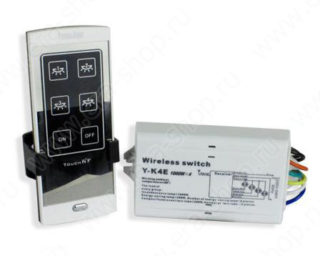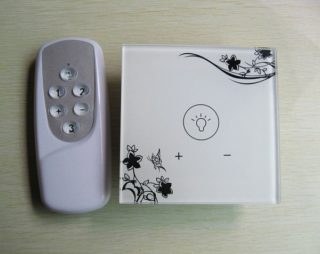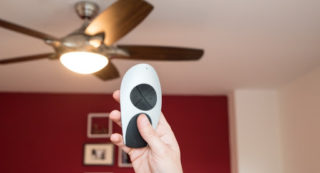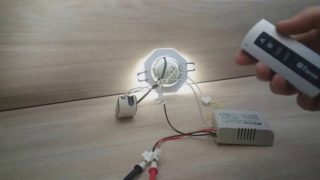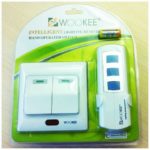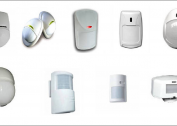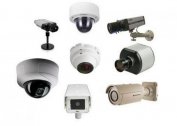Remote control lighting switches can be seen in residential and administrative buildings, industrial premises and entertainment venues. The remote switch allows you to activate and extinguish the lamp, adjust the settings for their glow. These options allow you to improve the quality of life, to make the conditions of staying indoors more convenient, enjoyable and comfortable. In order to choose the right switch with a remote control, you should familiarize yourself with the device and the principle of operation of the models on sale, understand their advantages, disadvantages, installation and operation features.
Using a remote switch
A typical remote light switch is a two-part device:
- Transmitter (remote control). Equipped with its own energy source, the device generates a signal with certain parameters that correspond to the settings of the second part of the product.
- Receiver. It is an indicator in which the processing of the received signal and the implementation of the functions inherent in the program occur.
The use of a wireless lighting control system provides such features:
- inclusion of one or several lamps at once, addressed or in the whole room;
- setting the strength of the glow;
- setting the parameters of the light gamut when using LED products.
Remote shutdown of light can be carried out using a portable remote control or with remote access, when the signal is transmitted via the Internet or via a private radio channel. This option is popular among citizens who permanently leave their property. Periodically turning on the lamps creates the effect of presence and scares off intruders.
Varieties of circuit breakers
On sale is a wide range of household switches controlled by remote control and telephone, designed for power consumption in the range of 0.5-3.5 kW.
- With a delay. After switching on, the lamps light until they are turned off forcibly. Another option is products that glow for 10-60 seconds after activation. These are usually installed in corridors and other passageways.
- With channel settings. These are the most complex and expensive devices designed to work in different modes. Products glow in the same range or automatically switch the signal in accordance with the settings.
- Wireless The best option for those who prefer to control the lighting without getting up from the couch. The option is convenient in that at night, you can turn on the lamps in the right rooms, without moving in the dark from the switch to the switch.
- Sensory. Products are available with displays through which they are configured and programmed.
To equip a house or apartment, one or more types of remote switches can be used. The choice is determined by their own priorities and financial opportunities.
Management principle
The industry produces devices that work on the same principle, but differ in the technology used.
The sensors of the switch can be controlled by radiation generators of the following types:
- Infrared The source is a remote control that emits infrared waves of a certain spectrum. A feature of such devices is the need for the receiver and transmitter in the field of visibility. The signal from the walls is not reflected, so the remote control must be sent to the receiver window, which is not always convenient. To control remote receivers, intermediate relays can be installed.
- Radio wave. This is a more convenient and functional option. Radio waves propagate in volume, passing through some obstacles and enveloping others. Due to this property, it is possible to turn on lamps located at a considerable distance from the remote control, including in rooms with closed doors.
Adaptations of both types can be used autonomously, as individual elements of an apartment, or used in the Smart Home system.
Remote Switch Selection Criteria
 When choosing a switch with a remote control, you should pay attention to a number of nuances on which the effectiveness of the device will depend:
When choosing a switch with a remote control, you should pay attention to a number of nuances on which the effectiveness of the device will depend:
- the ability to connect with your own hands to save on the services of specialists;
- compliance of the frequency range and power with the requirements of the law;
- signal range and its patency;
- number of options and their real need;
- dimensions and weight of the device;
- correspondence of the receiver to the style and interior of the room;
A strong signal can cause malfunctioning pacemakers and hearing aids.
Connecting a remote light switch
Any master with the initial skills in working with household tools and the concept of electricity can connect a remote switch.
To work, you will need:
- roulette;
- pliers;
- screwdrivers;
- soldering iron;
- indicator;
- standard shrink sleeve switch;
- insulation tape.
During installation, safety measures must be observed. Carrying out manipulations with wires and parts is allowed only when the voltage is off.
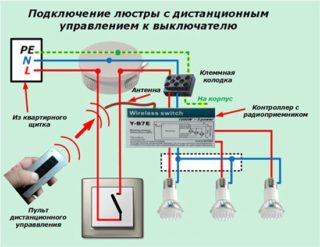 Connection is carried out in the following order:
Connection is carried out in the following order:
- Markup.
- Checking the operability of the device before installing it.
- Installing the receiver and power supply. For placement it is allowed to use a switch glass or a lamp cover.
- Power off, electrical connection.
- Masking parts of the receiver and power supply or decorating them.
- Connecting a network, checking the operability of the structure, performing settings (programming).
It is advisable to put the receiver in a key switch. He will duplicate the remote, if for some reason it fails.
Advantages and disadvantages of remote control devices
Like any electronic device, remote control switches have their pros and cons.
Advantages:
- improving the quality of life due to the convenience of controlling the lighting system;
- passive housing protection against intruders;
- energy saving;
- increased lamp life;
- wide range of products, allowing you to choose the right model;
- ease of installation, which does not require special skills;
- the ability to create the optimal level of brightness and glow mode.
Disadvantages:
- false positives;
- signal strength depends on the charge of the power source;
- the risk of impact on the operation of pacemakers and hearing aids, sensitive electronic devices;
- signal distortion due to weather conditions.
Before deciding whether to install a remotely controlled lighting system, you need to evaluate all sides of the issue, including your own financial capabilities.
DIY remote circuit breaker
Making a switch on the remote control will allow you to have fun and save a little on the difference in price of a factory-made and self-made product.
It will be necessary to prepare such details:
- old or new remote control;
- controller connected to lighting devices;
- power source for remote control.
Using a computer program, you need to calibrate the signal parameters for each channel in the network. To ensure guaranteed operation of the device, it is necessary to establish three-fold duplication of the command by clicking on the corresponding button.
Manufacturers Overview
 The most popular are the following models of remote switches:
The most popular are the following models of remote switches:
- Wookee. It works on radio waves. Signal patency 100 m on the street and 20 m indoors. The total power of consumers is 1000 watts.
- Nootehnika. The device is IR controlled. It features high build quality and reliability.
- Sapphire. Equipped with IR emitters and dimmers. The set parameters are saved after turning off the light.
- Jung. Reliable and practical equipment designed to connect 30 channels with a total power of up to 3500 watts.
To purchase quality products from the manufacturer, you should contact certified points of sale.
